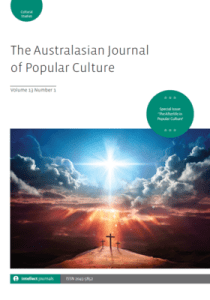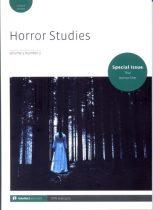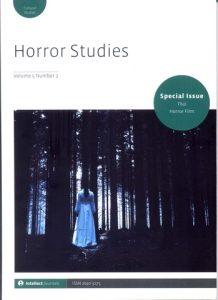Given that “Gothic” is not a category native to Asia but rather a classificatory term coined by Western writers and literary critics, should not the calls for the examination of “Asian Gothic” be discouraged? Or is there any redeeming quality to this kind of positioning of Asian texts?
Why do we need Asian Gothic?
With over 4.75 billion inhabitants, accounting for nearly 60% of the world’s population, Asia is the largest and most diverse continent on Earth. This alone should make one hesitate before attempting to reduce its rich cultural production to a potentially detrimental homogenizing label that aims to present an image of a larger “imagined community” at the cost of eradicating difference. It is clear that the term “Asia” is more than a neutral geographic identifier, as it is always embedded in discursive practice that enacts and perpetuates cultural assumptions and imposes ideological judgments about the people who live there, their socio-political conditions, and the creative works they produce and consume. Labels like “Asian Literature” or “Asian Cinema” exist simultaneously to mark the geo-cultural origin of certain works but also to distinguish them from the more “mainstream” productions that reflect the West-centric bias of the global publishing and film distribution industries. Given that “Gothic” is not a category native to Asia but rather a classificatory term coined by Western writers and literary critics, should not the calls for the examination of “Asian Gothic” be discouraged? Or is there any redeeming quality to this kind of positioning of Asian texts?
Without a doubt, Asian Gothic is not a popular label—a quick search for the term will likely take you to a cluster of online shops selling dark fashion accessories and a few academic sites. Within the scholarly community, the appearance of Asian Gothic as a classificatory term is consistent with the global turn in Gothic studies that became noticeable towards the end of the first decade of the twenty-first century, but the category only began to gain critical legitimacy in the late 2010s. In the 1980s and 1990s, Gothic scholarship was mostly focused on western Gothic forms and Asian literature was mostly discussed in imperial and post-colonial Gothic contexts firmly entrenched in the comparative discourse of East versus West. With Gothic seen primarily as a literary genre, the term was rarely applied to cinema (or other visual media), where it was found indistinguishable from Horror. If anything, however, it was the cinema that ultimately contributed to the emergence of the Asian Gothic label, conceptualized as a critical extension of the popular category of Asian Horror.
When “Asian Horror” made its first appearance in the early 2000s, the phrase was not intended to delineate a coherent genre, but rather to serve as a global branding and marketing strategy for the promotion of disparate horror films made in Asia. Introduced to Western audiences through the festival circuit and “artsy” independent cinemas, Asian Horror films offered a chance to revitalize the genre that in the late 1990s seemed clearly in decline. In 2001, London-based Metro Tartan launched its “Asia Extreme” division based on a concept that “elided the differences between different Asian national cinemas in order to create a single, strong, indelible brand image” (Martin 1). The brand focused mostly on horror and violent action/crime productions from Japan, South Korea and Hong Kong, with occasional titles from Thailand, Singapore and Taiwan. By the time Tartan ended its operation in 2008, the collection included over one hundred films whose themes aligned with western Orientalist fantasies that portrayed the East as mysterious, inscrutable and fascinating, but also barbaric, perverse and depraved. Although the brand undoubtedly succeeded in popularizing Asian “cult” cinema, it also established Asian Horror as a category known mostly for its “moral and visceral extremes” (Choi and Wada-Marciano 1) and “sensibility, typified by . . . over-the-top grotesque[ness] to the point of being surreal” (qtd. in Choi and Wada-Marciano 5).[1] It thrived on simplification, stereotyping and general cultural insensitivity; needless to say, it was problematic.
Not everyone saw the term as a liability, though. For many Asian filmmakers, the Asian Horror brand was not a limitation but an opportunity. The term began to be interpreted not as a signifier of difference (where “Asian” equalled “non-Western”) but rather of commonality (stressing regional inter-Asian connections). This debate was also reflected in the works of regional film critics, with some, like Bliss Cua Lim, decrying a “globalist deracination of Asian genre films” (112), and others, like Vivian Lee, pointing out that the label encourages a regionalist approach to filmmaking, funding and distribution while offering an opportunity for smaller and often financially struggling industries to promote local films on a much larger global scale (214). Two decades later, we can now conclude that while the collective Asian Horror category may have started as a gross oversimplification or an attempt to set Asian films apart from the “proper” (Western) horror genre, it has ultimately contributed to the recognition of an industry that is no longer positioned as derivative of Hollywood, devoid of originality and style, but has instead become a standard in its own right. Additionally, the widespread popularity of the label has initiated extensive scholarly inquiry into local genre histories and has led to a broader acknowledgement of Asian cinema’s impact on the genre.
Introduced as a branding strategy, Asian Horror never fully transcended its commercial origins. It can be argued then that Asian Gothic developed out of the need to create a term more suitable for academic inquiry. If Asian Horror is often meant to imply certain types of East and Southeast Asian film productions, Asian Gothic appears as an attempt to make sense of the vast and diverse body of Asian literature, film, television, games, comics and other forms of cultural production by reading these texts from a Gothic perspective. It has to be stressed here that the Gothic in this context is no longer thought to be a fixed genre and bears only a remote connection to eighteenth-century English literature where it is said to have originated. Critical explorations in Asian Gothic often begin by identifying texts that engage with typical themes and concerns, or employ conventions, devices, or stylistic elements generally associated with the Gothic, but their primary purpose is to examine what can be gained from opening up these texts to a Gothic interpretation. In this sense, while it initially may appear to be a mode, aesthetic, or tone, Asian Gothic may be best understood as a practice or a process.
A Gothic reading of Asian texts is by no means meant to be intrusive. It in no way intends to impose an unwelcome foreign label on these works, or to imply that some specific authors or their books should be simply rebranded as Gothic. It poses no threat to “official” reception of Asian classics, nor does such a reading aim to undermine local interpretations; instead, it simply provides an alternative way of discussing the text. Asian Gothic refuses to treat Asian cultural production as a copy of Western Gothic classics, even when their authors openly acknowledge such inspirations. It avoids direct comparisons that strengthen the dichotomy of West versus East (or more recently Global North versus South) and prioritises inter-Asian connections. It does not privilege diasporic authors who write in English and often live and work abroad, but rather seeks home-grown approaches to these Gothic themes which are seen as universally human. It recognizes that, as Andrew Hock Soon Ng explains, “[a]fter all, transgressing taboos, complicity with evil, the dread of life, violence, and the return of repressed (just to name some familiar Gothic themes) are not specific to any culture or people, but are experienced by all throughout history” (1).
Invested in the examination of local varieties of the Gothic in Asia, Asian Gothic draws on postcolonial, transcultural and global approaches but refuses to be reduced to any of them. Rejecting the notion that the Gothic needs to be bound within the limits of its original genre, it shows preference for more contemporary investigative strategies of Eco-Gothic, Anthropocene Gothic, Urban Gothic, or Gothic Folklore, and its preoccupation with ghosts opens it up to discussions on spectrality and haunting. In its study of Asian texts, Asian Gothic is wary of methodological approaches that privilege West-centric perspectives and keen to engage with local socio-cultural and philosophical contexts, contributing to the decolonization of the field. In doing so, it resists acculturation and forces us to re-examine major foundational assumptions of Gothic Studies, its practice, and its terminology that are often taken for granted.
Nearly two decades since its first appearance, Asian Gothic has gained a degree of legitimacy as a method of inquiry and continues to attract a steadily growing number of local and international scholars willing to unpack the label and claim it as their own. In their works, Indian literature no longer appears only in Postcolonial or Imperial Gothic contexts; Tropical Gothic refers to more than the title of a Nick Joaquin novel; and goshikku fashion seems oddly at home in Cool Japan. Critical reframings of works of Asian literature, film and popular culture, like the ones offered in this volume, reassure us that Asian Gothic is a process. You can look at this process as a challenge—condensing a vast area with innumerable texts into a single article or even a book seems an impossible task because there are so many things bound to be left unsaid. But it is also an opportunity to highlight previously unseen connections, introduce new texts to a larger audience and perhaps encourage further scholarly inquiry on the subject. Sometimes the best we can do is to take things one book (or film) at a time, and with this in mind, we hope you enjoy this brief Gothic journey through Asia.
*An excerpt from the introduction to the 2023 special issue of Wenshan Review on Asian Gothic, ed. Katarzyna Ancuta and Li-hsin Hsu
Works Cited
Choi, Jinhee, and Mitsuyo Wada-Marciano. “Introduction.” Horror to the Extreme: Changing Boundaries in Asian Cinema, edited by Jinhee Choi and Mitsuyo Wada-Marciano, Hong Kong UP, 2009, pp. 1-12.
Lim, Bliss Cua. “Generic Ghosts: Remaking the New ‘Asian horror film.’” Hong Kong Film, Hollywood, and the New Global Cinema: No Film is an Island, edited by Gina Marchetti and Tan See Kam, Routledge, 2007, pp. 109-25.
Lee, Vivian. “Ghostly Returns: The Politics of Horror in Hong Kong Cinema.” Hong Kong Horror Cinema, edited by Gary Bettinson and Daniel Martin, Edinburgh UP, 2019, pp. 204-22.
Martin, Daniel. Extreme Asia: The Rise of Cult Cinema from the East. Edinburgh UP, 2015.
Ng, Andrew Hock Soon. “Introduction: The Gothic Visage of Asian Narratives.” Asian Gothic: Essays on Literature, Film and Anime, edited by Andew Hock Soon Ng, McFarland, 2007, pp. 1-18.
[1] The quote is from Tartan’s founder, Hamish McAlpine.
 Gothic has long been theorized as the domain of the feminine, the queer or the ‘soft masculine’, and most discussions of Gothic masculinity propose to see it in terms of a split of the masculine subject at the level of rationality and sexuality. This article examines the construction of Gothic masculinities in the films of the Thai director Kongkiat Khomsiri in the context of the Thai gender system and Thai heroic masculine ideologies their protagonists embody. While Thai horror films abound in depictions of feminine evil, interestingly the Gothic cinescapes of Khomsiri are the domain of tough masculine men. The article discusses the director’s first three features: Chaiya (2007), Slice (2009), and The Gangster (2012), bringing into focus the films’ portrayals of their working-class underdog heroes and their ‘hard’ masculinity. The discussion also highlights the visual aesthetics of Khomsiri’s films and their reliance on the Gothic conventions in the construction of the characters and the environments they inhabit.
Gothic has long been theorized as the domain of the feminine, the queer or the ‘soft masculine’, and most discussions of Gothic masculinity propose to see it in terms of a split of the masculine subject at the level of rationality and sexuality. This article examines the construction of Gothic masculinities in the films of the Thai director Kongkiat Khomsiri in the context of the Thai gender system and Thai heroic masculine ideologies their protagonists embody. While Thai horror films abound in depictions of feminine evil, interestingly the Gothic cinescapes of Khomsiri are the domain of tough masculine men. The article discusses the director’s first three features: Chaiya (2007), Slice (2009), and The Gangster (2012), bringing into focus the films’ portrayals of their working-class underdog heroes and their ‘hard’ masculinity. The discussion also highlights the visual aesthetics of Khomsiri’s films and their reliance on the Gothic conventions in the construction of the characters and the environments they inhabit.


